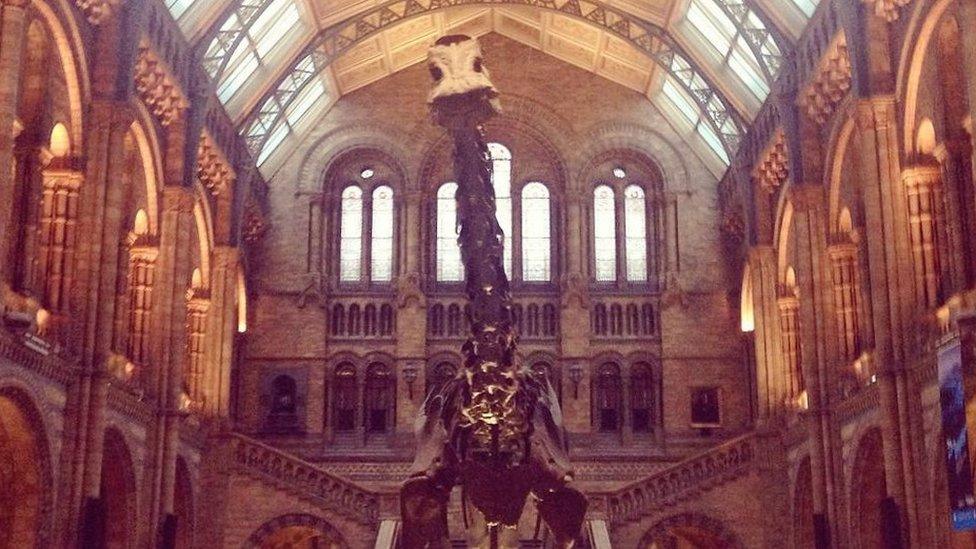London visitors' last chance to see Dippy ahead of tour
- Published
Dippy is to be replaced by the skeleton of a whale
A museum's famous 112-year-old dinosaur is set to leave London for a national tour.
Dippy the diplodocus, a 70ft long (21.3m) plaster-cast sauropod replica made up of 292 bones, is set to leave the Natural History Museum in Kensington later this year.
A six-person team will start a three-and-a-half week task of dismantling of Dippy on Thursday.
He is being moved as the museum is having a front-of-house makeover.
Dippy's spot is being taken by the skeleton of an 83ft (25.2m) female blue whale, weighing 4.5 tonnes.
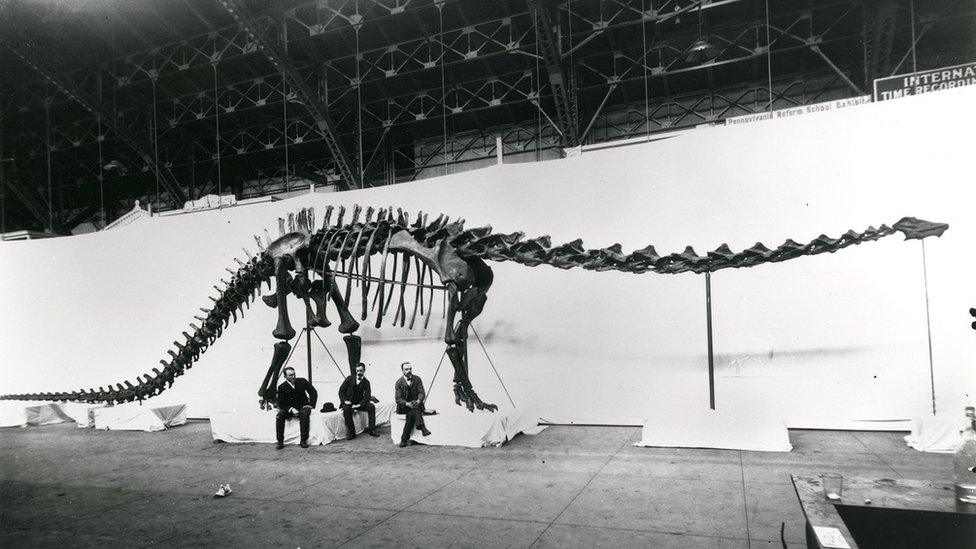
Dippy was first installed at the museum in 1905
She will take up position in a diving pose as she is suspended from the ceiling of the hall.
The whale is also more than 100 years old but - unlike Dippy - she is not a cast.
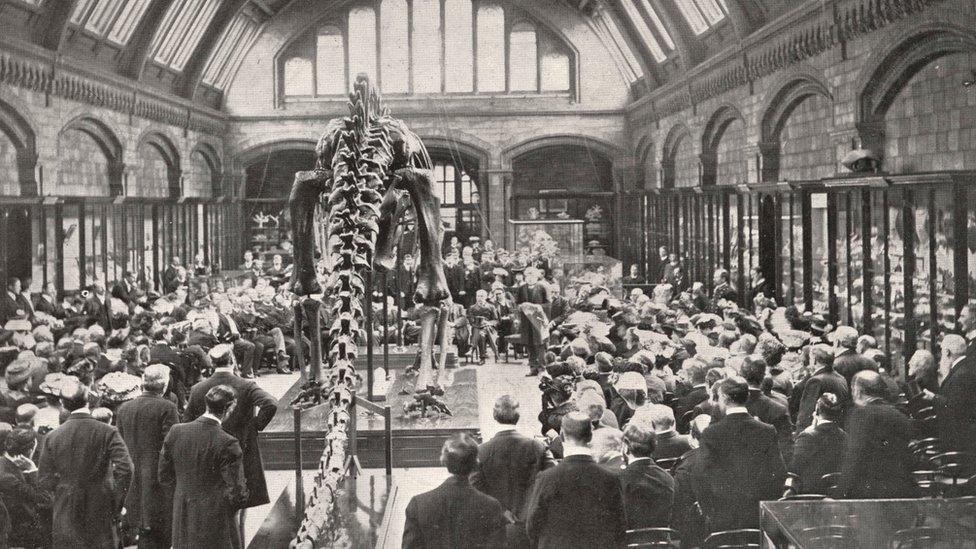
About 90 million people are estimated to have seen Dippy
On Thursday, construction will also begin on a tunnel to protect visitors during the dismantling of Dippy.
This tunnel will take three to four days to build and will almost totally obscure Dippy from view.
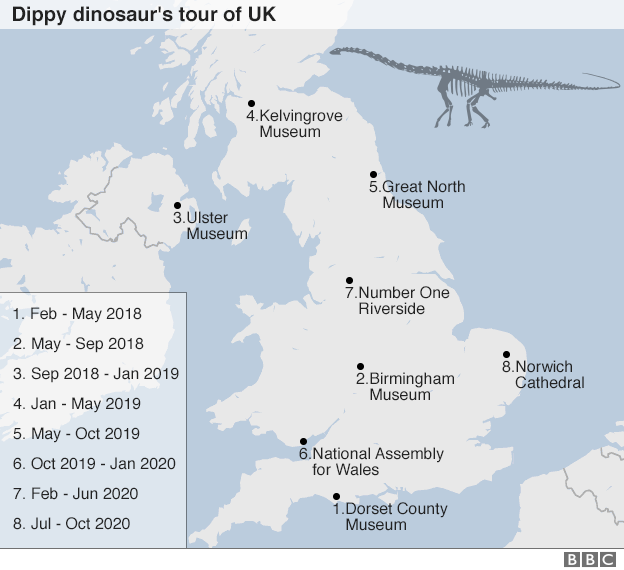
Parts of Dippy will be cleaned and repaired ahead of the two-year tour.
The tour will start in 2018, with Dorset County Museum set to be the first stop from February to May.

The Dippy story
Head of Conservation at Natural History Museum tells Today Dippy is like "huge 3D jigsaw puzzle"
Dippy the diplodocus was unveiled to the public in 1905
It is cast from a diplodocus specimen found in America in 1898, the bones of which were acquired by Scottish-born millionaire businessman Andrew Carnegie
During the reconstruction of the skeleton at the Carnegie Museum, it was found to be a different species from the two other diplodocus species known at the time and was named Diplodocus Carnegii in honour of its owner
Carnegie commissioned a replica of the dinosaur after King Edward VII saw a sketch of the dinosaur while visiting Carnegie at his Scottish castle and remarked how much he would like a similar specimen for the Natural History Museum
Dippy is one of 10 replicas of the original Diplodocus carnegii in museums around the world
During World War II, Dippy was disassembled and relocated to the basement to protect it from bomb damage
In 1979 Dippy made the move to Hintze Hall, where it remained until 2017

- Published15 November 2016

- Published24 September 2015
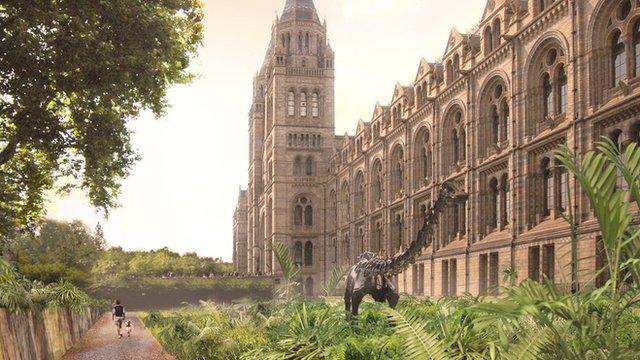
- Published30 January 2015
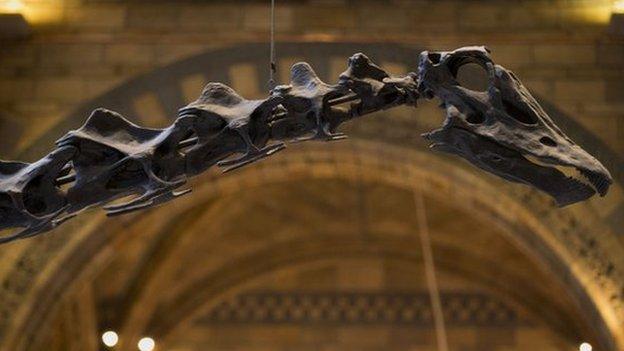
- Published29 January 2015
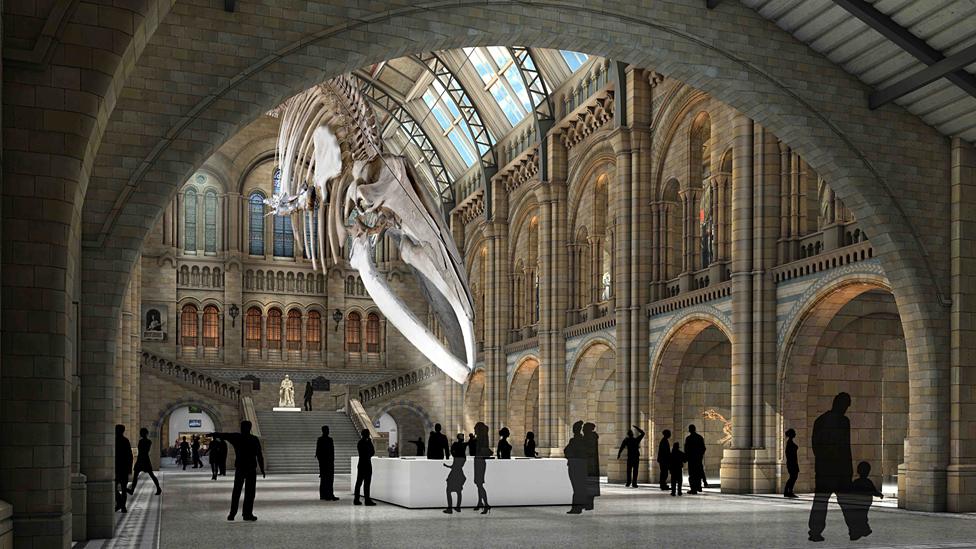
- Published29 January 2015
